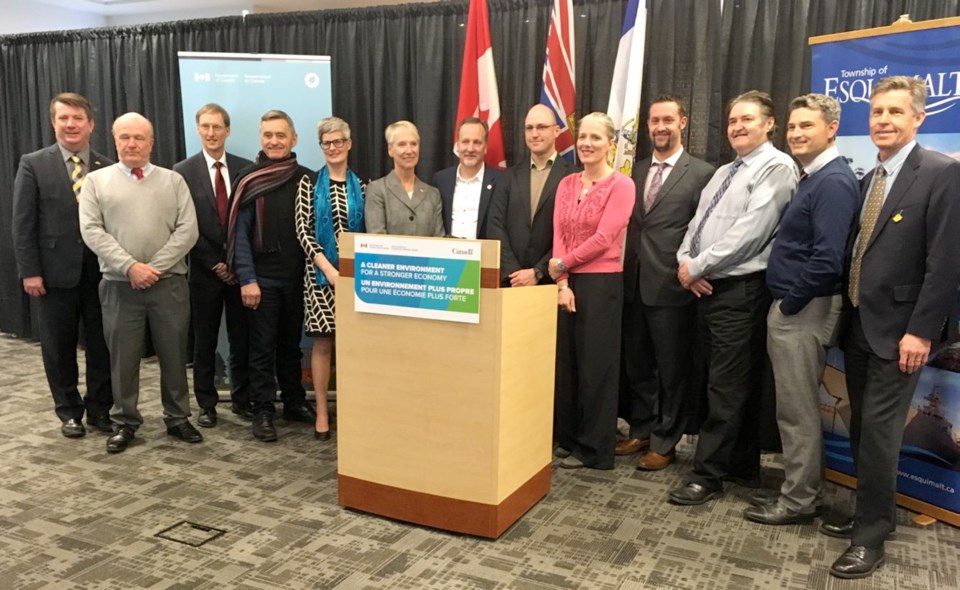A failure to curb carbon dioxide emissions could mean a future with more days above 25 C in Greater Victoria, says Canada’s environment minister.
“Mayors, cities [and] towns are on the front lines when it comes to climate change when there’s extreme heat, or forest fires or floods,” Catherine McKenna said after a discussion about climate change with the region’s mayors at Esquimalt Municipal Hall on Tuesday.
The minister’s visit comes two weeks after Environment and Climate Change Canada released a report warning that Canada is warming twice as fast as the rest of the world. The report compared the effects in 25 years of high carbon emissions with reduced carbon emissions.
In Greater Victoria, the high-emissions scenario included 42 days with temperatures above 25 C, up from the typical eight days seen now.
McKenna listed some possible outcomes of warmer temperatures, including more heat-related hospitalizations and fatalities, higher energy use for cooling in the summer, sea-level rise, coastal erosion and flooding.
Research scientists Greg Flato and Neil Swart were on hand to discuss the report and local climate change impacts.
The report, based on the work of 43 federal and university-based scientists who reviewed published scientific literature over the last two years, is the first in a series of scientific assessments the department is producing. It looks at the changes Canada is seeing as a result of global warming.
The report says the average temperature in Canada is 1.7 C higher today than it was 70 years ago, while the average global temperature is up 0.8 C. The Canadian Arctic has been hit even harder, with a 2.3 C increase, creating a risk that by the middle of this century, most marine regions in the Canadian North will be ice-free for at least a month at a time.
“I think this makes it clear we need to take immediate action on climate change,” McKenna said. “We are really all in it together and we need to adapt to the impacts of climate change.”
Flato said one of the most important observations in the report is that we still have choices. “The future in Canada and globally depends on our future emission pathways — how much greenhouse gases we emit going forward. That affects how much climate change we’ll experience,” he said.
“And so that to me is important to keep in mind that we can still make choices that will influence what the future will look like.”
McKenna cited goals set by Victoria and Central Saanich to reduce emissions, and, in Victoria’s case, transition to renewable energy. “I love this because when you actually have targets, you can measure how you’re doing and then continuously improve,” she said. “Our government is committed to working with cities and towns on the Island and across the country.”
McKenna applauded cities that have declared climate change emergencies, but said action is more important.
She praised B.C., which has had a price on carbon pollution for more than a decade, implemented by the previous B.C. Liberal government.
“And guess what, it’s worked,” McKenna said. “B.C. has reduced its emissions, it has one of the fastest growing economies in Canada, and it also has a vibrant green technology sector. That’s what we want to aspire to for our country.”
— With files from The Canadian Press



